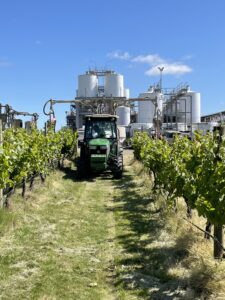
In spirit production, the distillation process is critical for creating a clean and refined product. It is responsible for extracting desired flavours and aromas and shapes the character of the final spirit. It also allows producers to remove undesirable characters and provide balance to the final product. While many factors contribute to the creation of a clean spirit, one element that demands attention is alcoholic strength.
An ideal balance between smoothness and intensity is a hallmark of a quality spirit. Alcoholic strength (% ethanol or ABV) plays a crucial role in shaping the overall quality and cleanliness of the final product. Higher alcohol concentration can help with the extraction of more flavours and essential oils from ingredients during distillation, resulting in a more vibrant and aromatic spirit. However, it is important to strike a balance, as excessive alcohol can overpower delicate nuances and mask the true essence of the spirit.
When distilled at an appropriate strength, a spirit can possess a smooth, harmonious character, with the flavours and aromas seamlessly integrated. This can easily be demonstrated by simple dilution of a spirit with water – this reduction in alcohol strength allows certain aromas and flavours to become more noticeable that would have otherwise been masked by the high levels of ethanol present. This philosophy underpins the sensory approach that we take for aroma and flavour profiling in spirits, where we dilute spirits prior to sensory assessment to ensure aromas and flavours are more easily perceived.
Creating a clean spirit also means minimising the presence of undesirable compounds, such as methanol, acetaldehyde, ethyl acetate, 2-butanol, acetic and butyric acids, as well as fusel oils, congeners and long-chain fatty acid esters. Most of these compounds derive either from the fermentation or the distillation process and often impart pungent and undesirable aromas or negative mouthfeel characters, such as astringency, bitterness or medicinal taste. Thankfully, these can be easily screened for chemically, to ensure safe levels for consumption, support consistency of product and aid compliance with any export market requirements.
Of course, maturation, filtration and blending techniques also contribute to refining the final spirit’s texture, clarity and overall quality. These additional steps serve to enhance the clean character, removing some remaining impurities and bringing the spirit to its optimal state for consumption.


